
10 minute read
PROFILE AIRPORTS COMPANY SOUTH AFRICA
FLYING HIGH INTO A GREEN FUTURE

Advertisement
Airports Company South Africa has a vision to be a recognised leader in the implementation of energy solutions that are economically and environmentally sustainable to airport businesses.
Air travel and transport has transformed the human experience and connected the planet in ways not thought possible before the turn of the century. It has also had an environmental impact on our planet, just like any other industry, business and even our homes. With the reality of climate change upon us, threatening the long-term sustainability of our planet, it is critical that every individual and role player turn to this urgent agenda, if they have not already done so.
Airports Company South Africa owns and operates nine airports in South Africa, namely O.R. Tambo International Airport in Gauteng, Cape Town International Airport, King Shaka International Airport in Durban, Port Elizabeth International Airport, East London Airport, Bram Fischer International Airport in Bloemfontein, George Airport, Upington International Airport and Kimberley Airport. Realising the paramount importance of taking proactive steps to reduce environmental impact and promote sustainability, Airports Company South Africa has for a number of years aspired to be the most sought after partner in the world for the provision of sustainable airport management solutions; and has incorporated a low-carbon economy, resource efficiency, energy efficiency and overall significant lowered environmental impact of business within its business activities.
CARBON NEUTRAL BY 2030
Airports Company South Africa has plans in place, many of which have already been achieved, some are in progress, and others are long-term goals looking ahead to 2030. Each airport has an optimised, feasible energy mix that will be implemented by 2030, moving the airport towards carbon neutrality in electricity consumption. These energy sources will be coordinated using smart energy grids and will not only decrease the airports’ carbon footprint, but also have the potential of providing operational cost savings in excess of R150 million per annum.
Each airport has a roadmap towards carbon neutrality by 2030 that consists of projects and initiatives that must be undertaken to achieve this goal. These include
natural gas to power trigeneration plants, solar thermal powered absorption cooling plants, solar photovoltaic plants, vertical axis wind power plants, geothermal heat sinks as a replacement for air conditioning cooling towers, geyser sleeves to reduce energy consumption, lighting reduction and lighting control technologies, and air conditioning passive cooling techniques such as solar heat deflective paint and low emissivity glass.
SHOOTING FOR THE (GREEN) STARS Environmental accreditations also form part of Airports Company South Africa’s long-term strategy, and in order to sustain the consciousness of environmental impact, existing terminal buildings have been earmarked for green building certification, which will verify that their operations are resource efficient, energy efficient and ecologically sustainable. Application will be made in this regard, to Green Building Council South Africa (GBCSA) to accredit the terminal buildings. In addition, the ACI Carbon Accreditation programme, which has the focus of reducing carbon emissions of airport operations, is being targeted for the various levels and will require that all stakeholders and users of the airport are compliant with environmental sustainability.
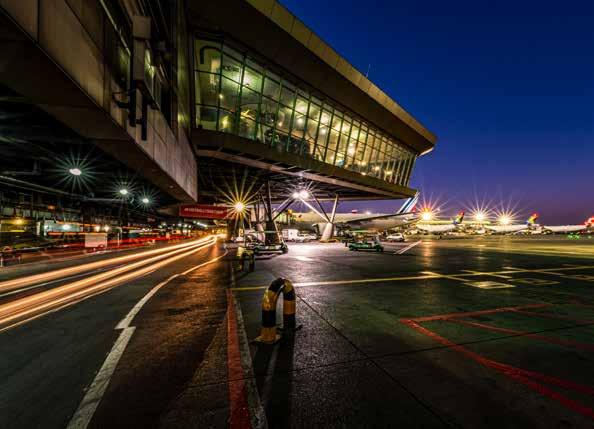
The third category for 2030 environmental sustainability is about sustaining environmental consciousness, and this includes “green leases” for all tenants, with active energy management programmes for tenants using significant amounts of energy. “Green clauses” will be incorporated for project contractors, along with green service level agreements, which will be implemented during the course of the accreditations from the Airports Council International and the GBCSA. These green leases, contract clauses and service level agreements have the goal of closing the loop in bringing stakeholders and airport users along the journey of resource efficiency, energy efficiency and environmental consciousness, making all the efforts sustainable.
GREEN ACHIEVEMENTS
With the long-term vision having been established, Airports Company South Africa has a number of significant achievements under its belt. In the area of energy reduction, Airports Company South Africa’s nine airports show a reduction in energy consumption in excess of 10% over the last five financial years. This is regardless of the passenger growth, air traffic movements and infrastructure growth experienced over the past five financial years, and is equivalent to powering more than 70% of King Shaka International Airport for a period of 12 months (or powering over 2000 average households over a 12-month period). This was achieved by the imperative to move towards LED lighting technology, the adoption of appropriate lighting controls and the controlling of air conditioning systems. Lighting and air conditioning are significant energy users in airports, and can make up more than 65% of the energy bill.
SOLAR SAVINGS
Renewable energy efforts and a low carbon energy mix have successfully achieved a carbon footprint offset at Airports Company South Africa’s regional airports. The solar PV plants collectively contribute more than 2% of Airports Company South Africa’s annual electricity requirements, which is equivalent to the carbon footprint of more than 200 homes, or more than the operation of Bram Fischer International Airport in Bloemfontein for a period of 12 months. The cost of solar PV per kWh is competitive with the electricity supply from the Eskom National Grid, and, using an average cost per KWh over the three installations in George, Kimberley and Upington airports, the solar PV yield offers an annual saving over R3,5 million: • George Airport had its 750kWp solar PV plant installed in October 2015, supplying the airport with about 40% of its electricity requirements • Kimberley Airport’s 500kWp solar PV plant, installed in May 2016, supplies the airport with over 56% of its annual electricity requirements • Also installed in May 2016, Upington International
Airport’s supplies the airport with more than 52% of its electricity requirements through its 500kWp plant. • Bram Fischer International Airport had its 750kWp solar PV plant installed in March 2019 • A 1MWp plant came online in July 2019 at Port
Elizabeth International Airport.
When it comes to other sustainability initiatives achieved so far, the recent drought in the Western Cape and the pressure to reduce potable water consumption led to an aggressive potable water saving programme, especially at Cape Town International Airport, which in fact reduced the airport’s water consumption by almost half. The initiatives adopted are now being considered for implementation across the nine airports. This includes low-flow plumbing
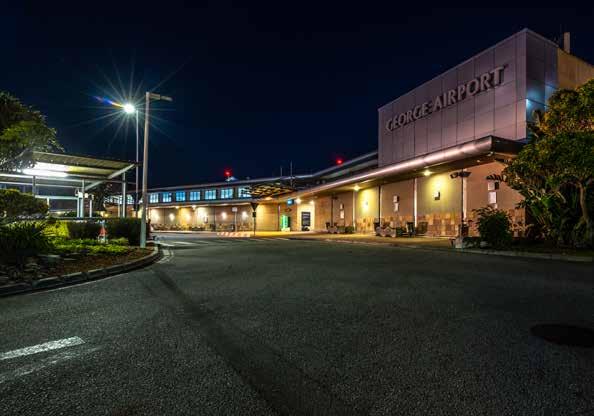
Environmental accreditations also form part of Airports Company South Africa’s long-term strategy, and in order to sustain the consciousness of environmental impact, existing terminal buildings have been targeted to migrate to an “existing buildings” green star rating.
and fittings, alternative cleaning regimes, awareness and accountability, rainwater harvesting and recycling at car wash bays. The use of borehole water, through a reverse osmosis plant, was also adopted at the airport. Choosing air-cooled air conditioning over water-cooled systems in new projects and replacement cycles, especially for drought-stricken or drought-prone regions has been established, while air conditioning condensate recovery systems are being designed at King Shaka International Airport, which will set the standard for those airports utilising water-cooled air conditioning systems. Another achieved goal has been the implementation of recycling, and reduction of waste to landfill, throughout Airports Company South Africa’s airports.
SUSTAINABLE WORK-IN-PROGRESS Some of the energy reduction initiatives which are underway include a programme for each airport to
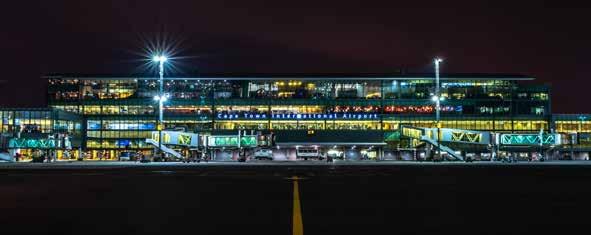
migrate their lighting technology to LED lighting. This is occurring at replacement cycles, in order to maximise the technology’s return on investment through operational and maintenance cost savings. The incorporation of lighting control, as per the area utilisation and functionality, is also currently in progress. Each airport is also on a plan towards the migration of their air conditioning systems towards greater efficiency cycles, with the consideration of alternative energy systems such as thermal absorption cooling. The adoption of technologies and strategies that lower air conditioning loads such as double glazing, heat deflective coatings/paints, wind lobbies and other strategies have been identified for implementation at airports with refurbishment cycles and for new infrastructure.
OFF THE GRID
When it comes to alternative low carbon emissions energy sources, Airports Company South Africa has made a techno-economic assessment of options such as natural gas, solar thermal energy, geothermal energy, anaerobic digestion as well as wind energy, based on the availability and suitability of each energy source to the airport’s geographical location, operations, current infrastructure and spatial plans. These have
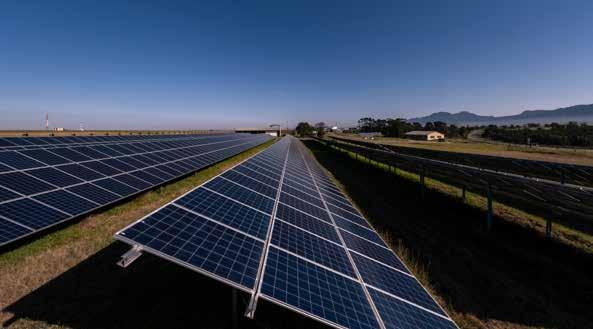
been approved by Airports Company South Africa’s Technical Committee for the detailed investigation of airport integration. Natural Gas that can be used in a trigeneration plant for electricity heating and air conditioning needs are targeted for O.R. Tambo International Airport, Cape Town International Airport and King Shaka International Airport, and Geothermal Energy to be used as a heat sink for cooling towers are being investigated towards integration at Cape Town International Airport. Wind Energy has been investigated for Cape Town and Port Elizabeth, and Energy Storage technologies are being investigated to store surplus yield from solar PV plants at Kimberley, Upington and George Airports bringing the airports closer to carbon neutrality. Studies are
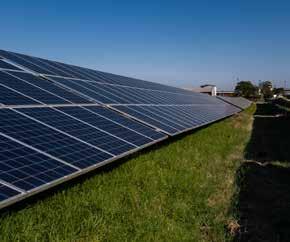
currently underway to convert the bus vehicle fleet at O.R. Tambo International Airport to run on compressed natural gas that will reduce the carbon footprint of the fleet by about 60%, while electric cars are also being considered for the airport’s other operational vehicles. The introduction of e-vehicle charging facilities is also being assessed for airports.
When it comes to environmental certifications underway, the new section of the terminal building in Cape Town International Airport has been earmarked for green building certification, and will target a minimum 4-star green rating under the EBP rating offered by Green Building Council of South Africa, while the new commercial office facility in O.R. Tambo International Airport is registered under the Design & As Built rating tool, and will target a 4 star rating. Technical manuals have been drafted for the guidance of certification of all new developments – terminal buildings, retail centres and office buildings, and a Technical Manual is being drafted to guide the transition of existing terminal buildings from their current state to the targeted green star rating. Airports Company South Africa’s Carbon Accreditation status with Airports Council International is currently as follows (Level 4 is the ultimate): • Bram Fischer International Airport – Level 1
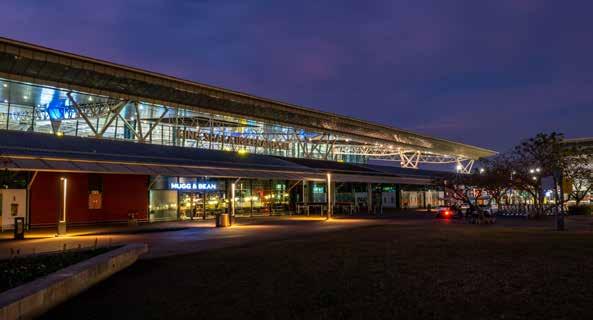
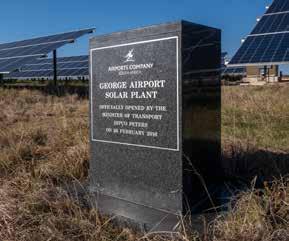
• George Airport – Level 1 • King Shaka International Airport – Level 2 • Port Elizabeth International Airport – Level 2 • OR Tambo International Airport – Level 2 • Cape Town International Airport – Level 2 All these actions, whether achieved or underway, form part of Airports Company South Africa’s overarching strategy directed towards promoting a healthy environment, and preserving it for the benefit of present and future generations. “Our concern with the environment goes to the heart of our focus on sustainability. Our approach is therefore to continue to entrench sound environmental management philosophies and business practices that will sustain Airport Company South Africa’s value into the future. This is based on the simple model of plan, develop, implement, audit and review…in order to ensure continual improvement,” concludes Airports Company South Africa Chief Operating Officer, Fundi Sithebe.
















